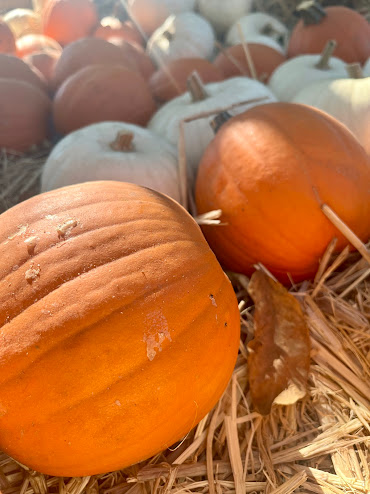The Pumpkin: A Cultural and Nutritive Symbol
Carlota Roa@
The pumpkin is much more than just an ingredient in the kitchen; it is a cultural symbol deeply rooted in various traditions around the world. From its use in festivities to its presence in legends and myths, this fruit has transcended its culinary role to become an icon of creativity and celebration.
The Pumpkin in History
Originating from the Americas, pumpkins have been cultivated for thousands of years. Ancient civilizations such as the Maya and Aztecs used them not only as food but also in rituals. Their versatility made them a staple food, rich in nutrients and easy to store.
In Europe, pumpkins were introduced by colonizers and quickly became popular. Today, their image is strongly associated with autumn and the celebration of Halloween, where faces are carved into their skin to create spooky lights—a tradition that has become an art form in itself.
Pumpkins in Celebrations
In different cultures, pumpkins are an essential part of celebrations. In Mexico, during Día de Muertos, dishes featuring pumpkin are prepared to honor departed loved ones. The pumpkin becomes a symbol of life and death, reflecting the duality of existence.
In the United States, Thanksgiving is another occasion where pumpkins shine, especially in the famous pumpkin pie. This dessert, with its spiced flavor of cinnamon and nutmeg, has become a symbol of family gatherings and gratitude.
The Pumpkin in Gastronomy
Culinarily, the pumpkin is a versatile ingredient. From creamy soups to stews, its sweet flavor and smooth texture make it perfect for a variety of dishes. In Mediterranean cuisine, for example, pumpkins are used in risottos and pastas, while in Asia, they are incorporated into curries and stir-fries.
In addition to its delicious taste, pumpkins are rich in nutrients. They contain vitamins A and C, as well as antioxidants that benefit health. Incorporating pumpkins into the diet is not only a way to enjoy their flavor but also a way to care for our well-being.
Art and Creativity
The pumpkin has also found its place in art. During the fall, pumpkin fairs provide an opportunity for artists and farmers to showcase their creations. From decorative pumpkins to elaborate sculptures, human ingenuity shines through this humble fruit.
Pumpkins have inspired artists and writers, symbolizing abundance, transformation, and creativity. In literature, they appear in stories and fables, representing the richness of the land and the passage of time.
For more information, visit:
[www.carlotaroa.com](http://www.carlotaroa.com)
[www.spanishtodaytutoring.com](http://www.spanishtodaytutoring.com)




Comments
Post a Comment